The Top 5 Nastiest Creatures Getting Stronger Due To Climate Change
When some people think of Global Warming, a vision of comfortable winters, more days at the beach, and less sweaters comes to mind. For those living away from coastal regions, the concerns of hurricanes or sea levels is non-existent. Out of sight, out of mind.
The realities are that climate change will affect each and every one of us. From the ways our communities rely on food produced in other states and nations; to the costs of energy and sourcing of water. But it gets worse. Much worse. We now present to you The Top 5 Nasty Creatures Getting Stronger Due To Climate Change. Some of them seem straight out of science fiction.
Brain-Eating Killer Amoeba
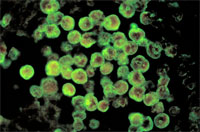 Back in grade school we all thought amoeba were the innocent fat blobs sharing space with paramecium and hydras under the microscope. No longer. 6 Americans have died this year, all young men, from a strain of amoeba that attaches itself to the inside of your nose and quickly burrows through your brain. Scientists are considering this death toll a spike; since only 23 people in the US were killed between 1995 and 2004. “This is a heat-loving amoeba. As water temperatures go up, it does better,” specialist Michael Beach said. “In future decades, as temperatures rise, we’d expect to see more cases.” Great. Keep plugging your nose when going underwater. So far, Florida, Arizona, and Texas have had the most cases. [Associated Press]
Back in grade school we all thought amoeba were the innocent fat blobs sharing space with paramecium and hydras under the microscope. No longer. 6 Americans have died this year, all young men, from a strain of amoeba that attaches itself to the inside of your nose and quickly burrows through your brain. Scientists are considering this death toll a spike; since only 23 people in the US were killed between 1995 and 2004. “This is a heat-loving amoeba. As water temperatures go up, it does better,” specialist Michael Beach said. “In future decades, as temperatures rise, we’d expect to see more cases.” Great. Keep plugging your nose when going underwater. So far, Florida, Arizona, and Texas have had the most cases. [Associated Press]
The False Black Widow Spider
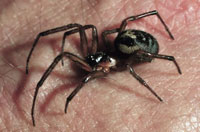 As if the real Black Widow spider wasn’t enough to deal with; there’s an impostor out there moving across the warming United Kingdom and sending grown men to the hospital. Generally, this little guy wouldn’t cause so much trouble, since the UK’s cold winters kept populations in check. However, thanks to warmer temperatures, their numbers have rocketed into the hundreds of thousands and spreading north to new locales. Apparently, the pain is more severe than a bee or wasp sting and can lead burning sensations, inflammation, and a couple days in the hospital. Worse, they love to hide in gloves or other clothing accessories and will bite almost immediately. Great. [The Daily Mail]
As if the real Black Widow spider wasn’t enough to deal with; there’s an impostor out there moving across the warming United Kingdom and sending grown men to the hospital. Generally, this little guy wouldn’t cause so much trouble, since the UK’s cold winters kept populations in check. However, thanks to warmer temperatures, their numbers have rocketed into the hundreds of thousands and spreading north to new locales. Apparently, the pain is more severe than a bee or wasp sting and can lead burning sensations, inflammation, and a couple days in the hospital. Worse, they love to hide in gloves or other clothing accessories and will bite almost immediately. Great. [The Daily Mail]
Deadly Irukandji Jellyfish
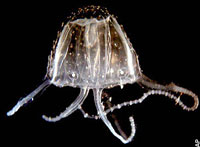 Australia has some incredible beaches and swimming/snorkeling areas. Millions come every year to enjoy the Great Barrier Reef and other popular marine haunts. Sure, sharks have always been a concern, but a new deadly organism is spreading and raising alarm in areas once thought safe for recreational activities. Call the Irukandji — this nasty, translucent jellyfish (about the size of a thumbnail) is one of the most toxic creatures on the planet. Due to warming oceans, the jellyfish are now 400 miles further south from their previously known habitat. We don’t want a perception to spread that every Sunshine Coast beach is a killing field, said Daniel Gschwind, the head of the Queensland Tourism Industry Council. I’ll stick to a pool, thanks. [The Telegraph]
Australia has some incredible beaches and swimming/snorkeling areas. Millions come every year to enjoy the Great Barrier Reef and other popular marine haunts. Sure, sharks have always been a concern, but a new deadly organism is spreading and raising alarm in areas once thought safe for recreational activities. Call the Irukandji — this nasty, translucent jellyfish (about the size of a thumbnail) is one of the most toxic creatures on the planet. Due to warming oceans, the jellyfish are now 400 miles further south from their previously known habitat. We don’t want a perception to spread that every Sunshine Coast beach is a killing field, said Daniel Gschwind, the head of the Queensland Tourism Industry Council. I’ll stick to a pool, thanks. [The Telegraph]
The Disease-Bearing Mosquito, Tick, and Mouse
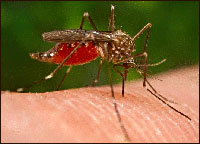 Your standard nasty critters are getting upgrades in the form of deadly diseases and life-altering viruses. Carriers like mosquitoes, ticks, mice are surviving warmer winters and expanding their range. Malaria is reaching higher elevations, Cholera is spreading in warm waters, and Dengue fever and Lyme disease are moving north. The West Nile virus has infected more than 21,000 people in the United States and Canada and killed more than 800. As one biologist said, “Things we projected to occur in 2080 are happening in 2006. What we didn’t get is how fast and how big it is, and the degree to which the biological systems would respond. Our mistake was in underestimation.”
Your standard nasty critters are getting upgrades in the form of deadly diseases and life-altering viruses. Carriers like mosquitoes, ticks, mice are surviving warmer winters and expanding their range. Malaria is reaching higher elevations, Cholera is spreading in warm waters, and Dengue fever and Lyme disease are moving north. The West Nile virus has infected more than 21,000 people in the United States and Canada and killed more than 800. As one biologist said, “Things we projected to occur in 2080 are happening in 2006. What we didn’t get is how fast and how big it is, and the degree to which the biological systems would respond. Our mistake was in underestimation.”
[The Washington Post]
Vibrio Vulnificus — The Flesh Eating Bug
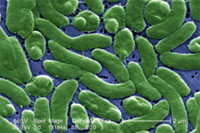 A flesh-eating bacterium that normally makes its home in the warmer waters of the Gulf of Mexico is now headed into the cooler Northern areas of the world. According to MSNBC, recent tests in Germany showed that Vibrio vulnificus was present in more than nine out of 10 samples of Baltic Sea water. The microscopic marine bug enters the human system through a cut or scrape (and even through ingestion) and devours flesh along the way. About 50% of cases are fatal; with patients dying within the first 48 hours of infection.
A flesh-eating bacterium that normally makes its home in the warmer waters of the Gulf of Mexico is now headed into the cooler Northern areas of the world. According to MSNBC, recent tests in Germany showed that Vibrio vulnificus was present in more than nine out of 10 samples of Baltic Sea water. The microscopic marine bug enters the human system through a cut or scrape (and even through ingestion) and devours flesh along the way. About 50% of cases are fatal; with patients dying within the first 48 hours of infection.






